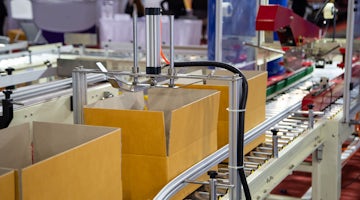Annual savings of € 560.000,-
Lubrication press button assembly machine
Initial situation
A leading company in the production of buttons for renowned sports and fashion companies assembles an average of 250,000 buttons per day. Each snap button consists of two or three parts, with production costs ranging from €0.35 to €0.80 per button. The button components (steel and brass) are placed in feeders on the assembly machine, aligned, and guided through pressing and forming tools, which must meet specific tolerances. If the tolerances are not met, the component is discarded. Special templates are used to verify the specific tolerance, and after the inspection phase, the assembled buttons undergo degreasing and painting. However, the lubricant used during assembly regularly penetrates the surface of the buttons, causing problems for the painted finishes.
Our Solution
To address these challenges, we recommended using Interflon Food Lube (aerosol).
Advantages
Implementing Interflon Food Lube offers the following advantages:
- Improved preparation of components for the assembly phase: The use of this lubricant ensures that the components are well-prepared and ready for the assembly process.
- 2% reduction in daily production waste: By preventing issues during assembly, the amount of discarded components is reduced, leading to a decrease in daily production waste.
- No problems with painted finishes during degreasing and painting: The lubricant does not interfere with the painted finishes during the degreasing and painting processes.
- Safer for people and the environment: Interflon Food Lube provides a safer solution for both workers and the environment.
Result
With the implementation of our MicPol® technology, the assembly phase has been significantly improved, resulting in a 2% reduction in daily production waste. The customer has calculated an annual saving of €560,000, considering 280 working days. This substantial cost saving demonstrates the effectiveness and benefits of our solution, which also ensures better quality control, reduced waste, and improved environmental safety.






